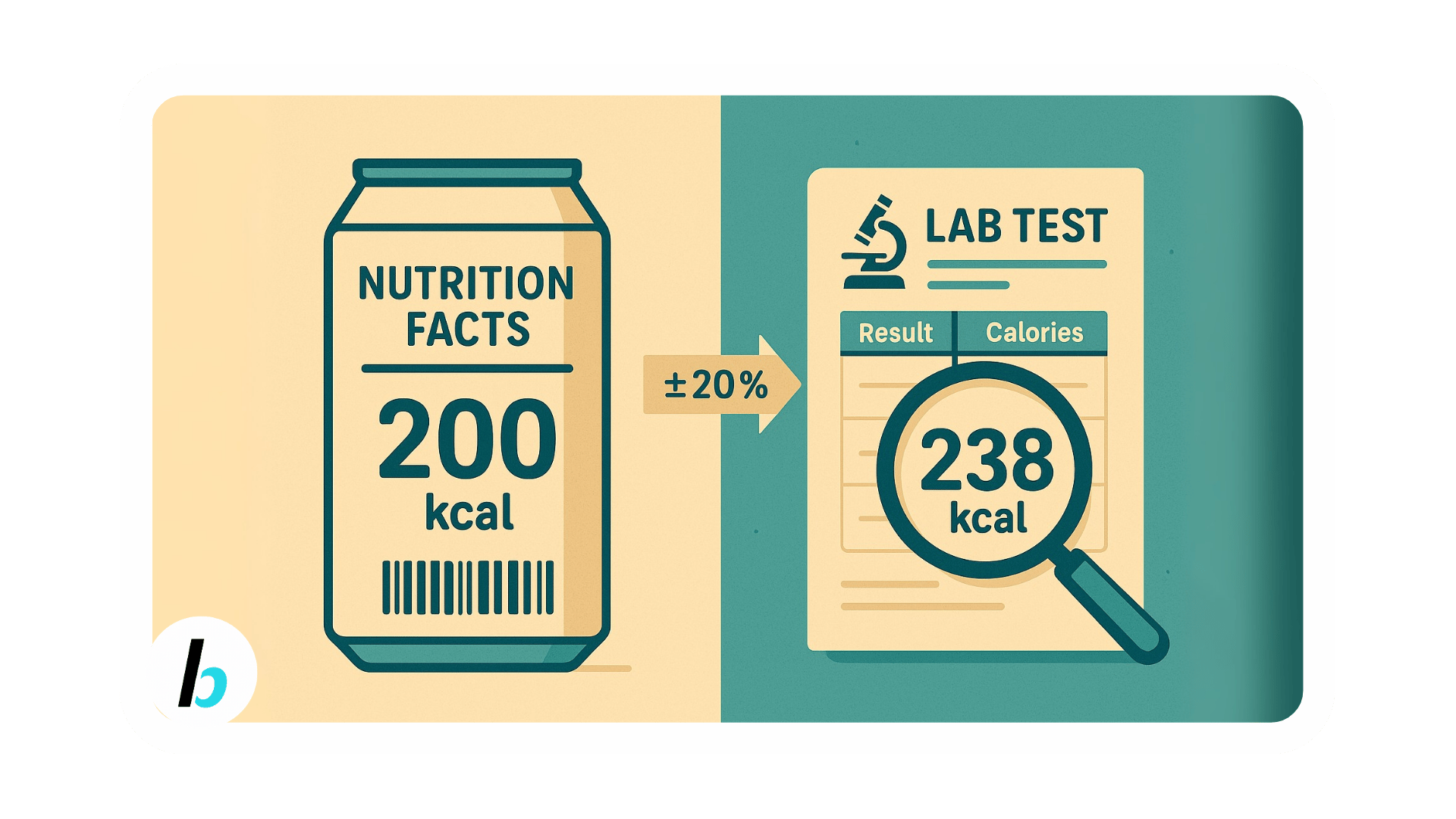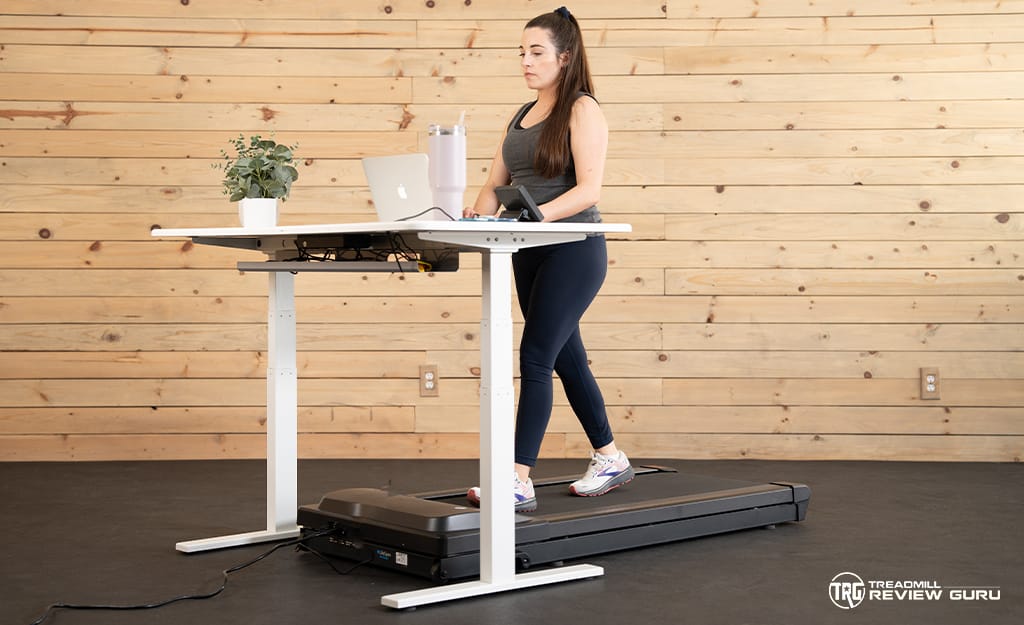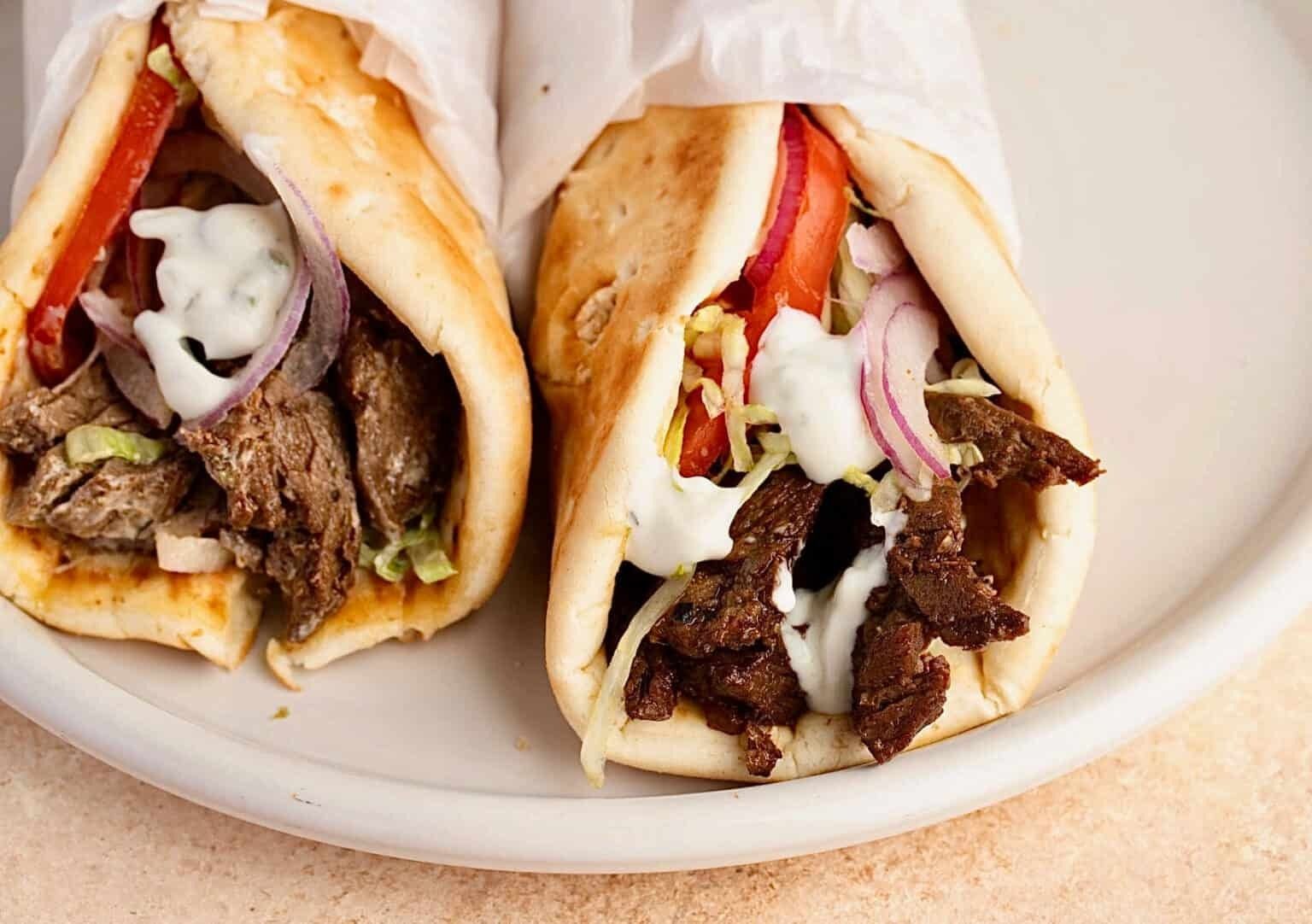Hey fitness nerds!
Thank you all {{active_subscriber_count}} of you!
I spent weeks diving deep into the USDA calorie database and testing popular tracking apps.
What I found shocked me. The numbers we rely on for weight loss might be completely wrong. But here's the twist; it might not matter as much as you think.
Read 🔽 below!
📱
IN LESS THAN 10 MINUTES WE WILL COVER:
Weekly Insights:
Are Calorie Labels and Apps Lying to us
Article Explained Simple: What is the Optimal Amount of Daily Steps for Health
3 Tips for Getting More Daily Steps In
Healthy Greek Gyros Recipe
Are Calorie Labels and Apps Lying to us

The short answer is yes, but it's more complicated than you think.
Food labels are legally allowed to be off by 20%. A food labeled as 200 calories can actually contain anywhere from 160 to 240 calories and still be in compliance.
But the real problems run much deeper.
Most food companies don't actually test their products. They use software that estimates calories based on ingredients. You type in your recipe and the program spits out nutrition facts.
This creates massive inconsistencies.
The USDA database that apps rely on has serious flaws. Different labs contribute data using different testing methods. Some information comes directly from food industry groups rather than independent testing.
Seasonal variations make things worse. A carrot grown in spring has different nutritional content than one grown in winter. The same apple variety can vary by 25% in calories depending on soil quality and growing conditions.
Restaurant foods are even less accurate. Studies found that some restaurant meals contained up to 200% more calories than advertised. The average frozen meal has 8% more calories than stated on the package.
Calorie counting apps compound these problems. Apps like MyFitnessPal rely on user-generated data. Anyone can add entries to the database. One banana might have five different calorie counts depending on which entry you choose.
I tested this myself with common foods.
The same brand of Greek yogurt had entries ranging from 80 to 130 calories per serving in the same app. That's a 60% difference for the identical product.
Generic entries are particularly problematic. The USDA creates generic listings for foods like "cheese pizza" because maintaining specific data for every brand is expensive. Your unique pizza brand might have completely different macros than the generic entry you're using.
Processing methods affect accuracy too. Raw almonds and roasted almonds have different calorie availability. Your body absorbs fewer calories from raw nuts because they're harder to digest. But food labels don't account for this bioavailability difference.
Here's what really matters though.
Consistency trumps accuracy for weight loss. If you consistently use the same entries and apps, even if they're wrong, you can still track trends and adjust your intake accordingly.
Your body doesn't care about the exact numbers. If the app says you're eating 2000 calories but you're actually eating 2400, it doesn't matter. What matters is that you can create a deficit by reducing your logged intake.
The solution isn't to abandon tracking entirely.
Use the same apps and entries consistently. Pick one database and stick with it. Your trends will be accurate even if your absolute numbers aren't.
Don't obsess over small differences. If an entry says 95 calories and another says 110 for the same food, just pick one and move on. The 15 calorie difference won't make or break your progress.
Focus on whole foods when possible. Single ingredient foods like chicken breast or bananas have more accurate entries than complex processed foods with multiple ingredients.
Track your results, not just your intake. If you're not losing weight at your current calorie target, reduce it by 200-300 calories. The exact numbers don't matter if you're seeing progress.
The biggest lesson from my research?
Calorie tracking is a tool, not a precise science. The labels might be lying, but that doesn't make tracking useless. It just means you need to use it intelligently.
The Gold standard for AI news
AI will eliminate 300 million jobs in the next 5 years.
Yours doesn't have to be one of them.
Here's how to future-proof your career:
Join the Superhuman AI newsletter - read by 1M+ professionals
Learn AI skills in 3 mins a day
Become the AI expert on your team

Fitness and health enthusiasts - We have a lot of things in store for you!
Check out busybody.io - and join the waitlist for our brand-new AI health app.
Article of the Week
Article Explained Simple: What is the Optimal Amount of Daily Steps for Health
The famous 10,000 steps goal came from a 1960s Japanese marketing campaign, not science.
A pedometer company called their device "manpo-kei" which translates to "10,000 steps meter". The number was catchy marketing, nothing more.
Recent research reveals the real optimal numbers. Large studies involving nearly 50,000 people found that health benefits start much lower than 10,000 steps.
For people over 60, benefits level off at 6,000 to 8,000 steps per day. More steps don't provide additional mortality benefits for older adults.
People under 60 see optimal benefits at 8,000 to 10,000 steps daily. This matches the traditional recommendation by coincidence, not design.
Even small increases matter significantly. People taking just 4,400 steps daily had a 41% reduction in mortality risk compared to those taking fewer steps.
Step intensity doesn't affect health outcomes. Whether you walk slowly or quickly, only the total number of steps matters for longevity benefits.
Fascinating Fact:
Health benefits begin with as few as 2,500 steps per day, reducing all-cause mortality risk by 8% and cardiovascular events by 11%, making any movement better than none.
We have a new 1 referral reward for all of you. This one has made my life 12 times easier and significantly improved my health. Best thing, it saves me $227 each month.
3 Tips for Getting More Daily Steps In
Getting extra steps doesn't require dedicated workout time. These strategies fit seamlessly into your existing routine.

Take phone calls while walking
Transform every phone call into a walking opportunity.
Business calls, family conversations, and even video calls can be done while moving.
I average 2,000 extra steps per day just from this habit.
Set a rule that any call longer than 10 minutes requires walking.
Park further away and take stairs
Always park in the first available spot, not the closest one.
Take stairs instead of elevators whenever possible.
These small choices add up to significant daily step increases.
Two extra minutes of walking per parking trip equals 200-300 additional steps.
Walking meetings and lunch walks
Replace sit down meetings with walking meetings when appropriate.
Suggest walking during lunch breaks instead of sitting in break rooms.
Many people find they think more clearly while walking.
A 15 minute lunch walk can easily add 1,500-2,000 steps to your daily total.
Healthy Greek Gyros Recipe (makes 4 servings)
Traditional gyros are loaded with calories from fatty meat and heavy sauces. This version delivers all the Mediterranean flavors with much better macros.
I make these every Sunday for meal prep. The tzatziki sauce is the secret to making this taste authentic while keeping calories low.
This recipe was created in 2 minutes with the BusyBody App. Click the button for free access to the app.

Macros per serving
Total Calories: 380 kcal
Protein: 35 g
Carbohydrates: 30 g
Sugars: 8 g
Fat: 12 g
The Ingredients
500g lean ground turkey (99% fat-free)
4 whole wheat pita breads
200g plain Greek yogurt
1 large cucumber, diced
3 cloves garlic, minced
2 tablespoons olive oil
1 large onion, sliced
2 tomatoes, diced
1 tablespoon dried oregano
1 teaspoon ground cumin
1 teaspoon paprika
2 tablespoons fresh lemon juice
2 tablespoons fresh dill, chopped
Salt and pepper to taste
Instructions
Make the tzatziki sauce first. Combine Greek yogurt, diced cucumber, minced garlic, lemon juice, and dill in a bowl.
Season with salt and pepper. Refrigerate for at least 30 minutes to let flavors meld.
Season the ground turkey with oregano, cumin, paprika, salt, and pepper.
Heat 1 tablespoon olive oil in a large pan over medium-high heat.
Cook turkey for 6-8 minutes, breaking it up as it cooks, until fully browned and cooked through.
Remove turkey and add sliced onions to the same pan with remaining oil.
Cook onions for 5-6 minutes until softened and slightly caramelized.
Warm pita breads in a dry pan for 30 seconds per side.
Assemble gyros by filling each pita with turkey mixture, caramelized onions, diced tomatoes, and a generous dollop of tzatziki.
Make your dream of working online a reality and start a newsletter - join beehiiv for free and don’t pay any renewal fees until you grow your subscriber base >2500 subscribers.
I’ve personally tried plenty of other platforms, and Beehiiv is hands down the best and easiest to use.


